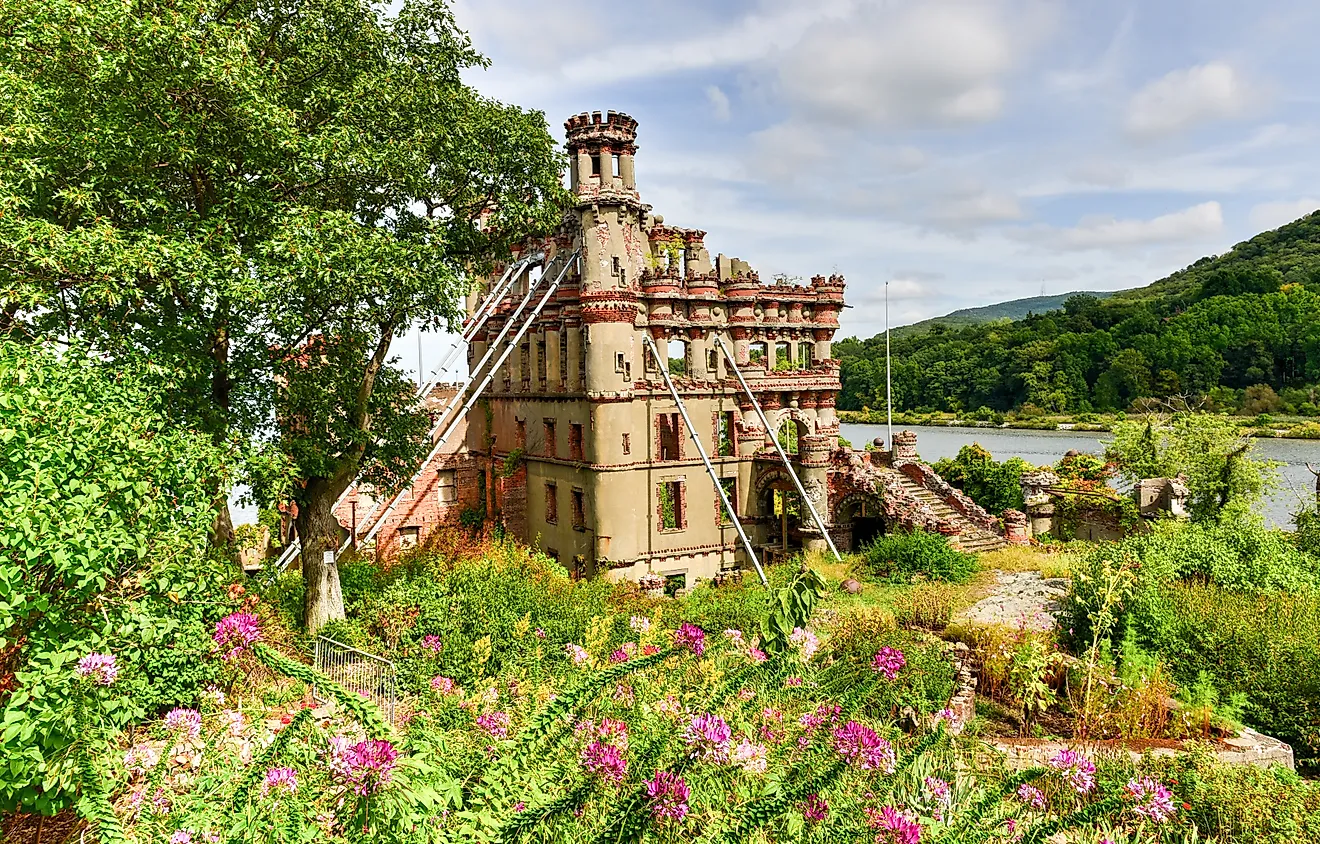
Dauphin Island, Alabama
Dauphin Island is one of the barrier islands in the Gulf Coast, off the coast of Alabama, in the United States. The island itself is in the outer part of Mobile Bay, south of Alabama Port. The island is known for its white sandy beaches, abundant wildlife, and historical fort.
History Of Dauphin Island

Dauphin Island has a rich and long history. Its first recorded history dates back to the Mississippian Period, from 1000-1550 AD. This evidence can be seen in the shell mounds found across the island, which are remnants of early indigenous life there. Seminoles, Choctaw and Creek people were all known to frequent the island for hunting, fishing and shellfishing. The shell mounds are indicators of this shellfishing practice, as they are evidence of the discarded shells of oysters, clams, and other popular shellfish.
The island was then ruled by various European powers, starting with the English, moving to French rule, and then being taken over by the Spanish. The French colonists first came to the island in 1699 and were led by Pierre Le Moyne d'Iberville. At this time, the explorers stumbled upon several human skeletons, which shocked them into dubbing the island "Massacre Island." In reality, the skeletons were part of a native burial mound exposed after a hurricane.

In 1707 the island was renamed Isle Dauphine, after Louis XIV's great-grandson. This is also the same word for dolphin, and due to the island's location on the Gulf Coast, it is often called 'dolphin island' mistakenly.In 1711, the French settlement on the island was raided by pirates.
Despite being ransacked, the settlement survived, and the island port became the major trading port for merchants from Mexico, Haiti, France, and Cuba. The waters of Mobile Bay were too shallow for larger ships to dock in, so they would unload goods on Dauphin, and smaller boats would take the goods to the mainland.
After having been under French rule for some time, the British overtook the island in 1766. They remained the official rulers of the area until 1780 when the Spanish invaded. Eventually, the island was captured by the American troops in 1813, as part of the War of 1812, as the Americans viewed the island as an important military and trading post.

Fort Gaines was built in 1821 as a means of protecting the island. Construction continued until 1853. During the Civil War, Confederate soldiers occupied the island in 1861. During the Battle of Mobile Bay in 1864, Union forces captured the island. After the war, Dauphin Island became the peaceful settlement it is known as today (though tourism has steadily increased, especially with the construction of a bridge connecting the mainland in 1955.)
Visiting Dauphin Island

Dauphin Island is primarily a tourist destination today. It is popular for its beautiful sand beaches, excellent fishing, and resorts. Fort Gaines still stands on the island and is a great place to soak up some of the area's history. It is one of the United State's most well-preserved forts and has ongoing reenactments and a museum.Indian Mound Park is another must-see attraction on the island. It doubles as both a historical site and a nature reserve. The area gets its name from the presence of large shell mounds found all over the park. The beaches are an attraction in themselves, and the white sand and clear blue waters are perfect for swimmers and sunbathers alike.
Wildlife In Dauphin Island

The island's landscape is mainly semi-tropical, with sand beaches, wetlands, and some larger vegetation. It is also a relatively flat island, with an elevation ranging from 0-3 meters, with the highest point being the dunes along the south shore and reaching a maximum height of 5 meters above sea level. The island consists of shoreline dune areas, which contain plants such as sea oats, beach grass, sea purslane, coastal bluestem, and seacoast marsh elder. There are also brackish wetlands and coastal ponds with similar vegetation, slash pine, saw palmetto, wax myrtle, saltmeadow grass, needlegrass rush, and switchgrass. Maritime forests are more inland and contain oak hammocks, mainly live oak, southern magnolia, myrtle oak, saw palmetto, slash pine areas, sand live oak, fetterbush lyonia, swamp titi and pond cypress.

Dauphin Island also has a large variety of bird species. The Audubon Bird Sanctuary occupies 164 acres of land and is a protected sanctuary for all types of bird species. It is listed as an IBA (important Bird Area) for the presence of rare species, most of which use it as a migratory stopping point. This area is ideal for birdwatchers and has a series of trails and boardwalks visitors can enjoy while searching for their favorite birds.
Many of the species that can be found in the sanctuary are migratory birds, meaning they only live in or stop by the park at certain times of the year. During its busiest seasons, in spring, some 350 different species can be found on the island. Marine birds and shorebirds are the most common, such as sandpipers, plovers, gulls, terns, pelicans, and cormorants.The wetlands have species such as willets, avocets, and the black-necked stilt. Migratory birds tend to be those that seek out more vegetated areas. They include bird species such as a number of different warblers, vireos, flycatchers, thrushes, gnatcatchers, wrens, kinglets, and tanagers. These smaller birds also bring various raptors to the area, like peregrine falcons and merlins.
From history to wildlife to sunny shores and warm waters, Dauphin Island is a beautiful destination for travelers and outdoor lovers. It is easy to see why it is a popular tourist destination for Americans and visitors from abroad.











